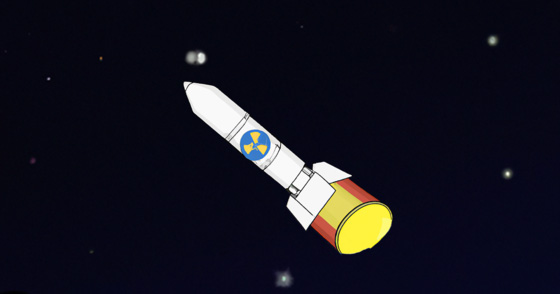A recent viral YouTube video by Kurzgesagt addressed the frequently asked question: “Why don’t we shoot nuclear waste into space?” Although the video used cartoonish depictions of nuclear waste, it provided well-researched content. It is clear why launching nuclear waste into space is not a feasible solution. Here are the three key reasons presented in the video.
- Prohibitive Costs Launching nuclear waste into space is a costly proposition. The video estimates that it would cost a minimum of $100 million annually to launch one reactor’s worth of spent nuclear fuel into space. With about 440 reactors worldwide, the annual cost would be around $44 billion. This figure does not even include the cost of launching spent fuel in temporary storage.
Moreover, even if money was not an issue, there would still be an insufficient number of rockets to launch all spent fuel into space. Entirely new space industries would need to be established to address this issue, which seems highly unlikely.
- The Complexity of Space Introducing thousands of containers of spent nuclear fuel into low Earth orbit could exacerbate the problem of space debris. Collisions with this fast-moving and dangerous debris could damage or destroy operational satellites, creating more debris. The Earth’s atmosphere would eventually pull back anything in low Earth orbit.
Sending waste to specific locations, such as the moon, deep space, or the sun, would be equally challenging. Reaching these destinations would require larger and more expensive rockets, compounding the cost issue.
- Rocket Imperfections The video highlights that 11 out of 146 rocket launches in 2021 were failures. Consequently, rockets carrying nuclear waste could explode during launch or break apart and crash back to Earth. Rocket failures could release radioactive particles, contaminating farmlands, water sources, food, and water supplies.
Given the availability of safe and secure ways to store spent nuclear fuel on Earth, it is not worth risking rocket failures to launch nuclear waste into space.
While the video suggests that most countries are not adequately addressing the issue of spent nuclear fuel, it overlooks the progress made by Finland, Sweden, Canada, the United States, Germany, and the United Kingdom in managing spent nuclear fuel. These countries have made significant strides in developing deep geologic repositories for permanent disposal or exploring the recycling of spent nuclear fuel.
For instance, France recycles nuclear fuel from its 56 reactors. The U.S. Department of Energy supports developing advanced reactor designs that could use spent nuclear fuel to produce electricity.
In conclusion, launching nuclear waste into space may sound appealing. Nevertheless, the prohibitive costs, the space complexity, and the rockets’ imperfections make it an impractical solution. It is essential to continue exploring and investing in safe and sustainable alternatives for managing spent nuclear fuel on Earth.
Link of interest: Office of Nuclear Energy
Link of interest: Investing in America Tour


